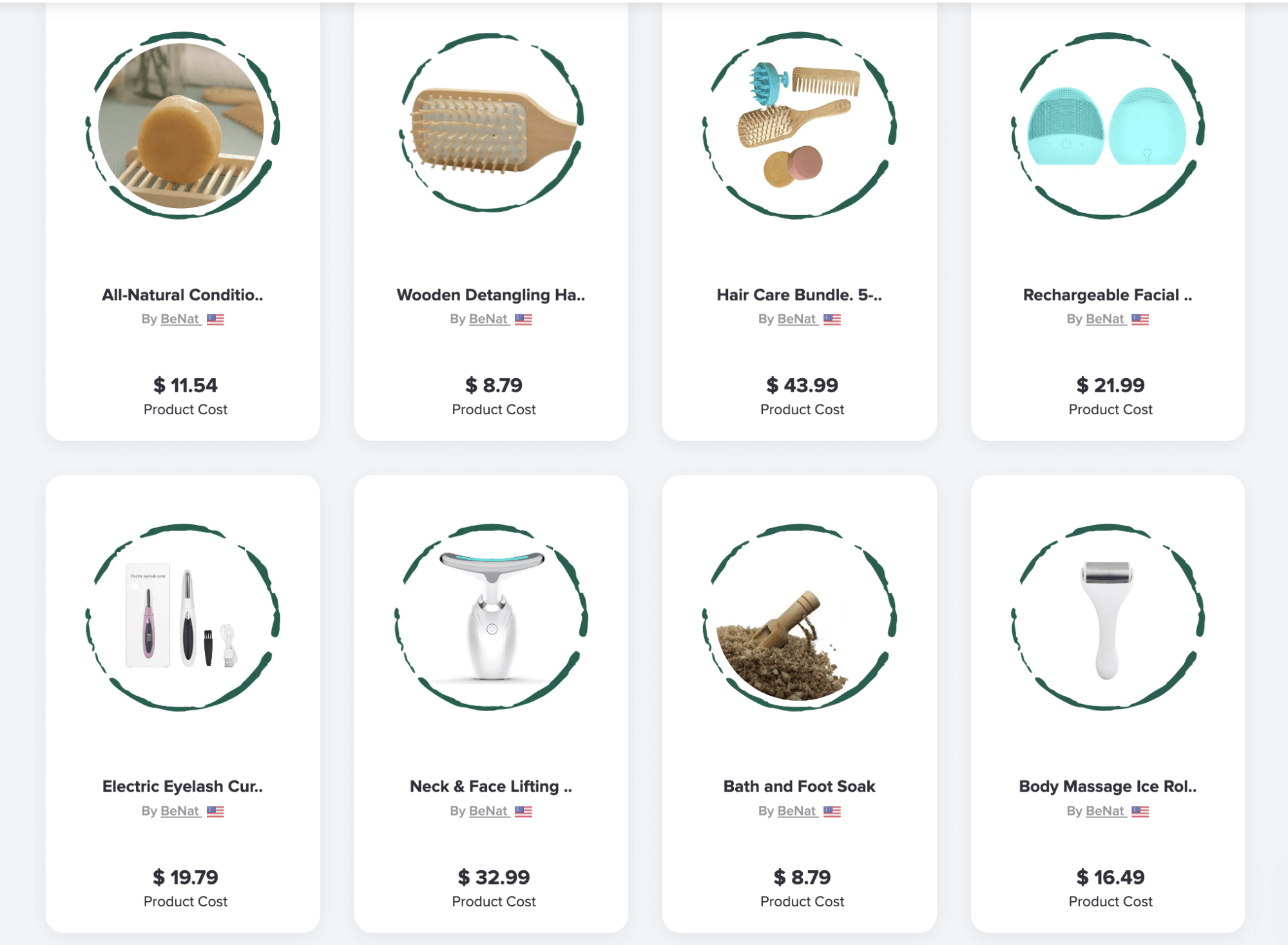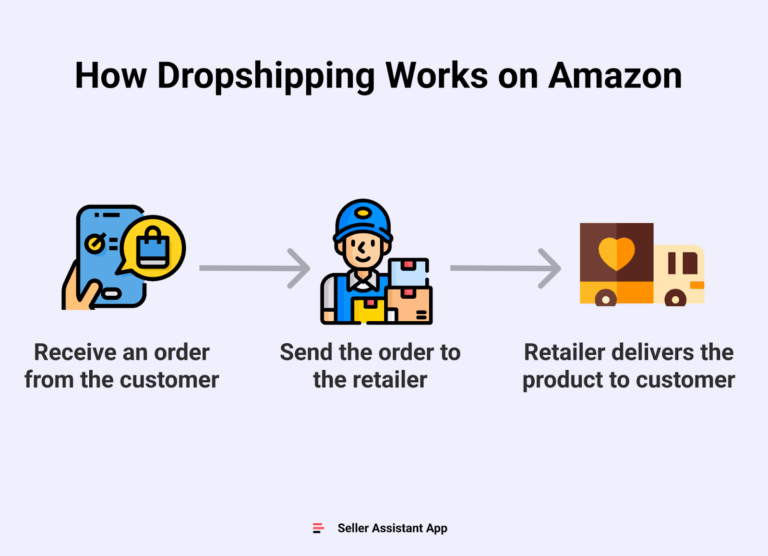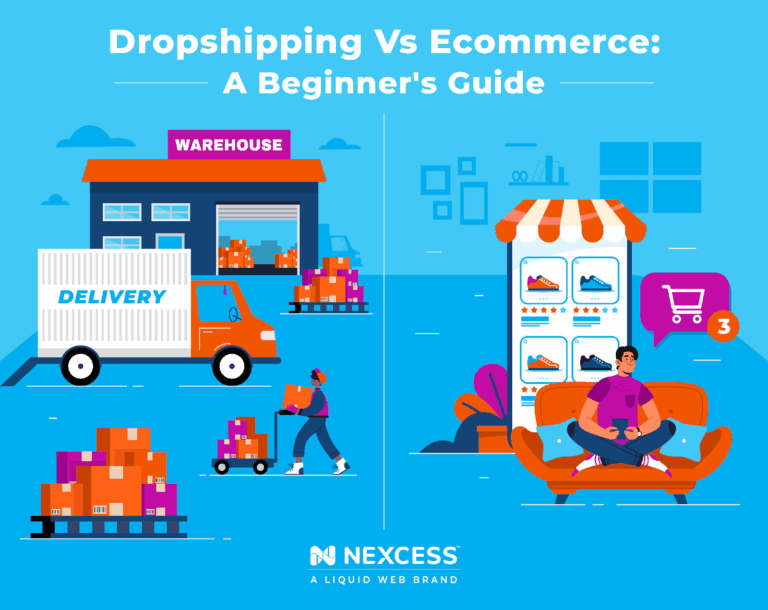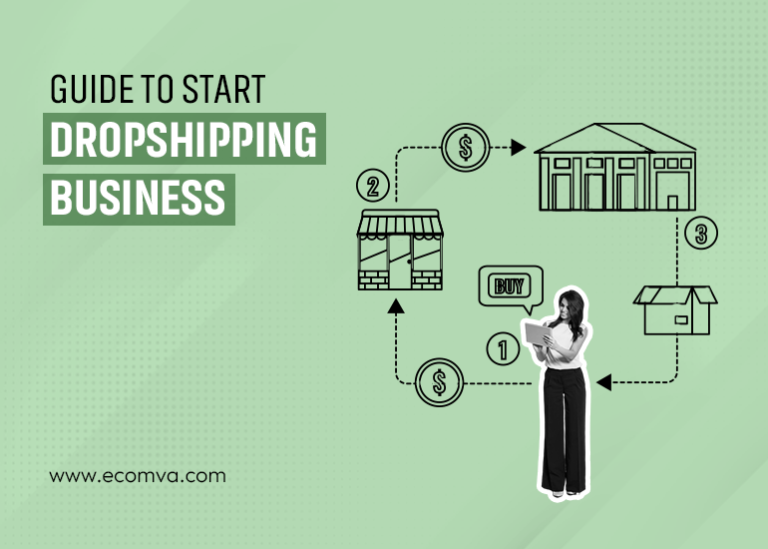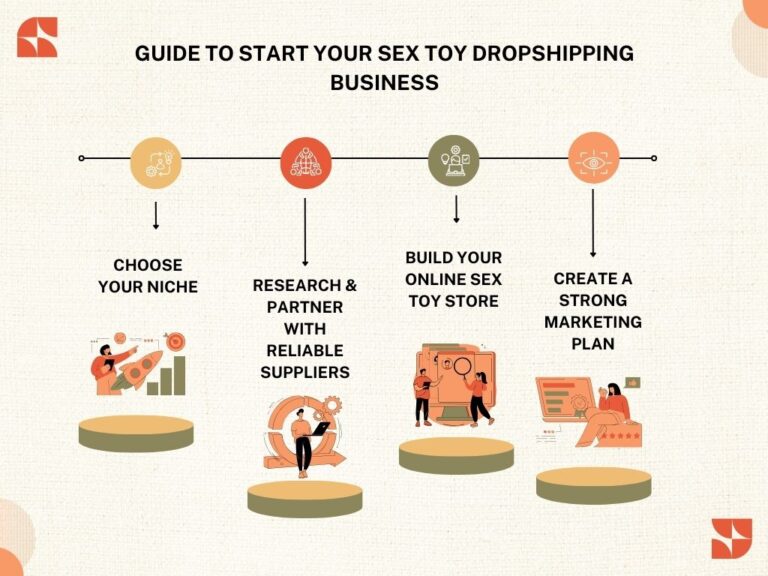How to Start Dropshipping in 2025 (A Beginner’s Guide)
Your Complete Guide to top dropshipping products 2025
Introduction to Your Dropshipping Journey
Congratulations on taking the first step toward your entrepreneurial dream! If you’re reading this guide, you’re likely eager to start your own online business, and dropshipping could be the perfect avenue for you. But what exactly is dropshipping? Simply put, it’s a retail fulfillment method where you don’t keep the products you sell in stock. Instead, when you sell a product, you purchase the item from a third party and have it shipped directly to your customer. This model significantly lowers your startup costs, allowing you to launch a business without the burden of inventory management or upfront investment in products.
The appeal of dropshipping goes beyond just low startup costs. It offers remarkable flexibility. You can run your business from anywhere with an internet connection, making it ideal for digital nomads and those looking to balance work with other commitments. You also have the freedom to experiment with different products and niches without the risk of being stuck with unsold inventory.
In this comprehensive guide, we’ll walk you through everything you need to know to identify the top dropshipping products for 2025 and successfully launch your online store. We’ll start by exploring the current market trends and in-demand product categories, helping you pinpoint what consumers are searching for and willing to buy. You’ll learn how to evaluate potential products based on factors like profitability, competition, and seasonal demand.
Next, we’ll delve into practical strategies for sourcing your products, setting up your online store, and creating effective marketing campaigns that attract customers. You’ll discover tips on optimizing your store for conversions, utilizing social media for brand awareness, and harnessing the power of influencer marketing to boost your visibility.
But that’s not all! We’ll also cover essential insights into customer service and maintaining relationships with suppliers, ensuring you build a sustainable business model.
Remember, every successful entrepreneur started where you are right now. With determination, creativity, and the right guidance, you can transform your vision into reality. Let’s embark on this exciting journey together, turning your dropshipping aspirations into a thriving online business!
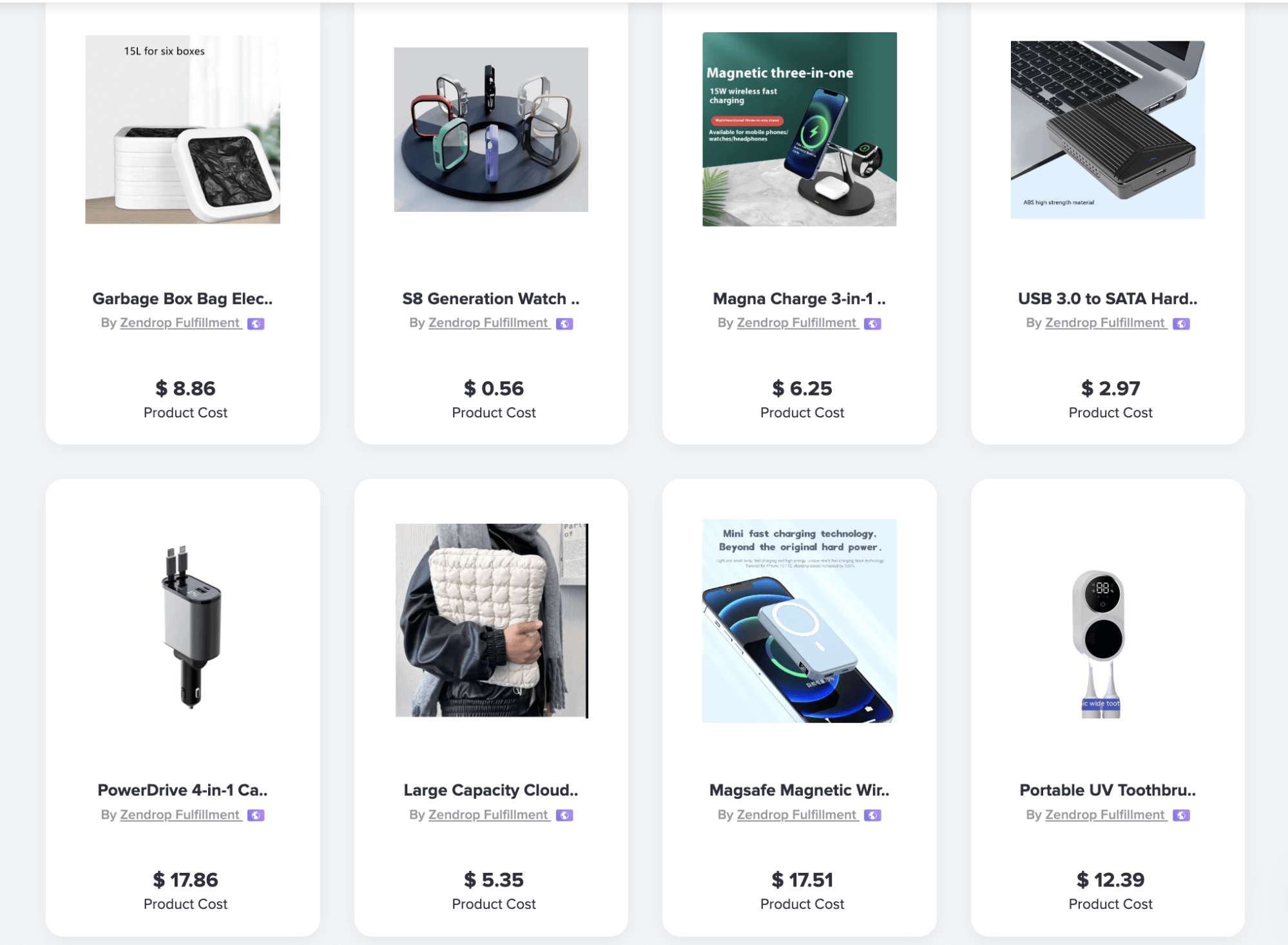
What You’ll Learn In This Guide
- Your Complete Guide to top dropshipping products 2025
- How Does Dropshipping Actually Work? A Step-by-Step Breakdown
- The Pros and Cons of Dropshipping: Is It Right for You?
- Step 1: Finding a Profitable Niche and Winning Products
- Step 2: Choosing the Right Dropshipping Suppliers
- Step 3: Building Your Online Store
- Step 4: Marketing Your Dropshipping Business to Get Sales
- Common Mistakes to Avoid as a Beginner
- Frequently Asked Questions (FAQs) about top dropshipping products 2025
- Conclusion: Your Next Steps to Launching Your Business
- Important Disclaimer
How Does Dropshipping Actually Work? A Step-by-Step Breakdown
Understanding the Dropshipping Model: A Step-by-Step Breakdown
Starting a dropshipping business can seem daunting, but breaking down the process into manageable steps will help you understand how it works. Think of yourself as the digital storefront and middleman, connecting customers with suppliers without holding any inventory. Here’s a straightforward guide on how dropshipping operates:
- Customer Places an Order on Your Online Store
-
Your journey begins when a customer visits your online store and finds a product they want to purchase. They add the item to their cart and proceed to checkout, entering their shipping information and payment details. At this point, you have a sale, and the customer is excited about their new purchase.
-
You Receive the Payment
-
Once the customer completes their order, you receive the payment through your e-commerce platform. This includes the product price plus any shipping fees, minus any transaction fees charged by your payment processor. It’s crucial to ensure your payment gateway is secure to build trust with your customers.
-
You Forward the Order to Your Supplier
-
After receiving the payment, you take action by forwarding the order details to your supplier. This includes the customer’s shipping address and any specific instructions (like gift wrapping). You’ll also pay the supplier the wholesale price for the product, which is usually lower than the retail price you charged the customer. This step is vital as it ensures the supplier is aware of the order and prepares for shipment.
-
The Supplier Ships the Product Directly to the Customer
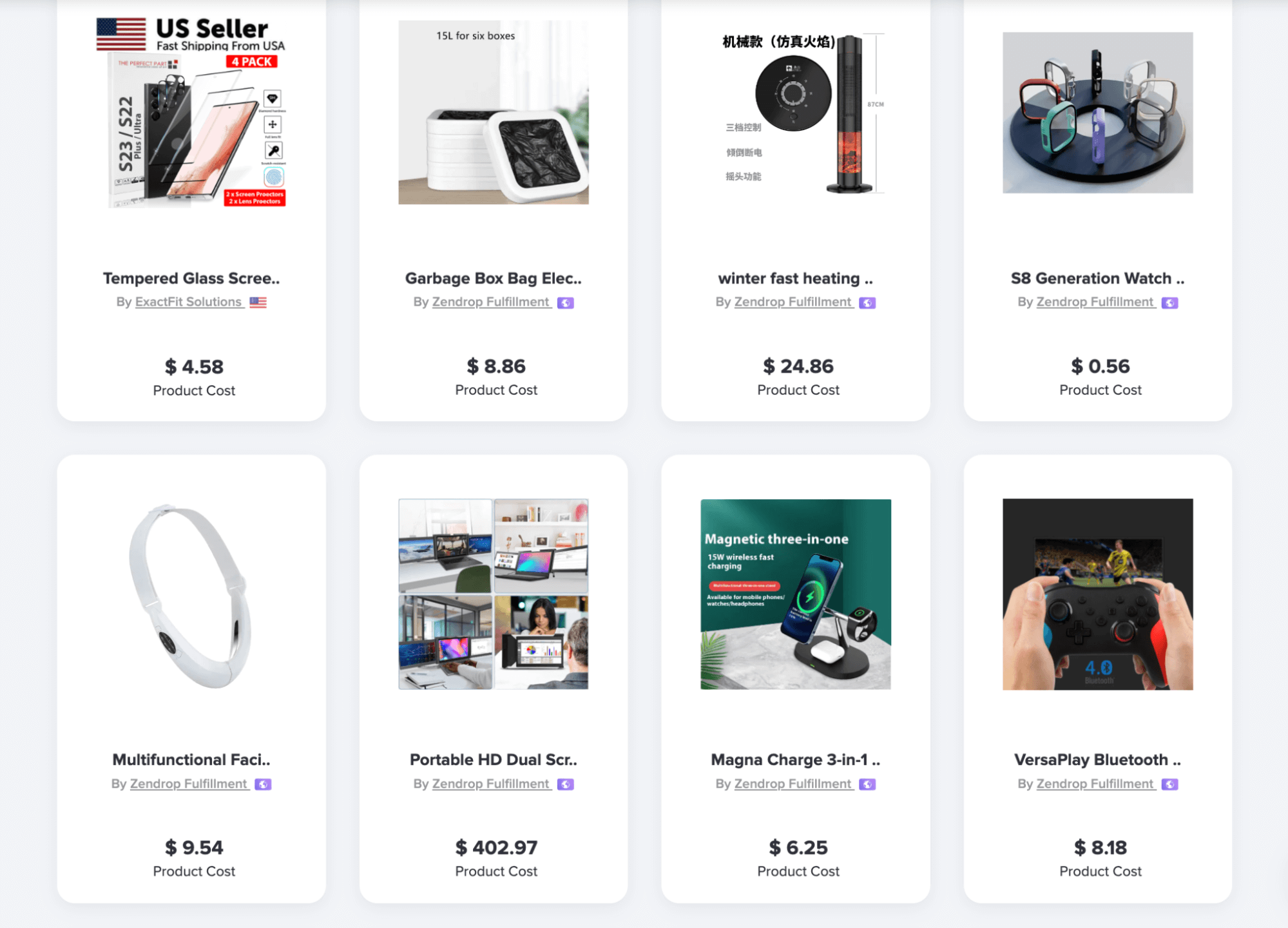
- The supplier then picks, packs, and ships the product directly to the customer’s address. This is where the magic of dropshipping happens: you don’t handle the product at all. Once the order is shipped, the supplier typically provides you with a tracking number that you can share with the customer. This transparency helps in building trust and keeps your customer informed about their order status.
The Flow of Money and Goods
In a dropshipping model, the flow of money and goods is streamlined:
-
Money Flow: The customer pays you the retail price. After forwarding the order, you pay your supplier the wholesale price, keeping the difference as profit. For example, if you sell a product for $50 and your supplier charges you $30, your profit is $20.
-
Goods Flow: The physical product moves directly from the supplier to the customer. You never handle the product, which reduces your risk and overhead costs significantly.
An Analogy for Clarity
Imagine you are running a virtual café. When a customer orders a coffee, they pay you $5. Instead of brewing the coffee yourself, you call a local coffee shop (your supplier) and place the order for them to deliver the coffee directly to your customer. You pay the coffee shop $3 for the coffee, keeping the $2 difference as your profit. This way, you provide a service without needing to stock any coffee beans or equipment.
Final Thoughts
Dropshipping is an accessible way to start an online business with minimal investment. By understanding the step-by-step process, you can confidently navigate the operations of your dropshipping venture. Focus on finding reliable suppliers and in-demand products, and remember that customer service and communication are key to retaining customers and building your brand. With dedication and the right strategies, you can turn your dropshipping business into a profitable endeavor.
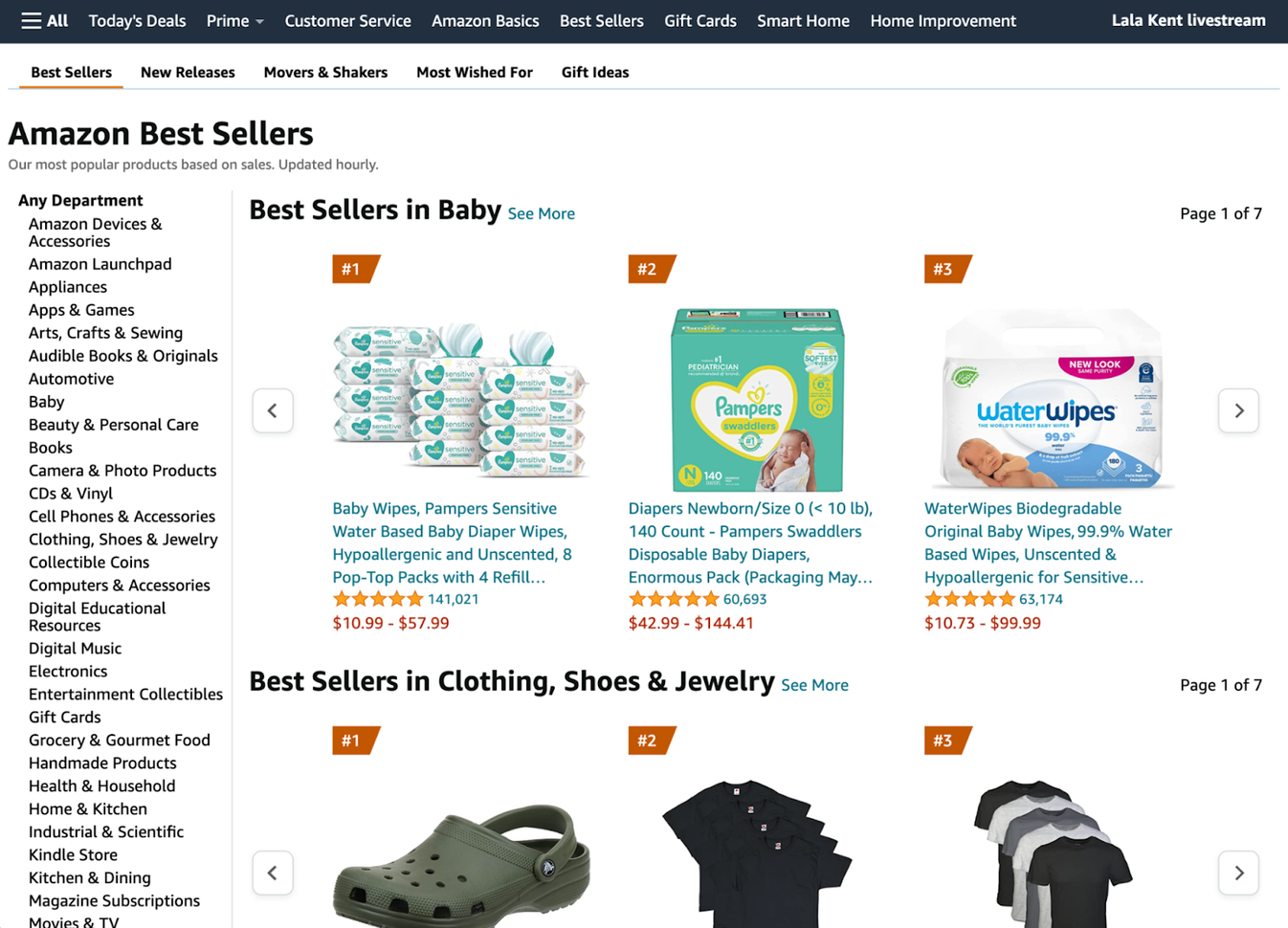
The Pros and Cons of Dropshipping: Is It Right for You?
Advantages and Challenges of Dropshipping
| Advantages of Dropshipping (Pros) | Challenges of Dropshipping (Cons) |
|---|---|
| Low Financial Risk: No need to invest heavily in inventory upfront. | Low Profit Margins: Typically lower margins compared to traditional retail due to competition and supplier costs. |
| Easy to Start: Simple setup process without the need for a physical storefront. | High Competition: The low barrier to entry means many sellers may offer similar products, making it hard to stand out. |
| Wide Product Selection: Access to a vast range of products without needing to stock them. | Supplier Dependence: Reliance on suppliers for stock, quality, and shipping can lead to issues if they fail to deliver. |
| Flexibility and Scalability: Ability to scale operations easily without the constraints of physical inventory. | Customer Service Challenges: Handling returns and customer complaints can be complicated when third-party suppliers are involved. |
| Global Reach: Opportunity to sell to customers worldwide without geographical limitations. | Shipping Complexities: Longer shipping times and potential for additional shipping fees can deter customers. |
| No Need for Physical Space: Operate from anywhere without the need for a physical store or warehouse. | Brand Building Difficulties: Limited control over product quality and branding can affect customer trust. |
| Market Trends Adaptation: Quickly adapt to changing market trends and consumer demands without heavy investment. | Payment Processing Fees: Transaction fees from payment processors can eat into already slim margins. |
Expanding on the Advantages
One of the most significant advantages of dropshipping is the low financial risk involved. Since you don’t have to purchase inventory upfront, you can start an online business without the burden of large initial investments. This makes dropshipping an excellent option for aspiring entrepreneurs and beginners who may not have substantial capital. You can test various products and niches without the fear of being stuck with unsold inventory.
Another appealing aspect is the ease of starting a dropshipping business. Setting up an online store can be done in a matter of hours, especially with platforms like Shopify or WooCommerce, which provide user-friendly tools and templates. You can focus on marketing and customer engagement from day one, rather than spending time managing stock or fulfilling orders. This setup allows you to quickly pivot and adjust your business strategy based on what resonates with your audience.
The wide selection of products available through dropshipping suppliers is also a significant pro. You can explore various niches, from beauty products to home décor, without the limitations of a physical inventory. This flexibility allows you to respond to market trends and customer demands swiftly, which can be crucial for staying competitive.
Discussing the Challenges
However, dropshipping is not without its challenges. One of the most pressing issues is the low profit margins. Due to the competitive nature of the dropshipping market, you might find it difficult to set prices that yield substantial profits. Many dropshippers operate on slim margins, which can make it challenging to cover costs such as marketing and transaction fees. It’s essential to conduct thorough market research to identify products that can offer better margins or unique selling propositions.
Another significant challenge is the high competition. With many entrepreneurs entering the dropshipping space, especially in popular niches, it can be difficult to differentiate your store from others. Successful dropshippers often invest in branding and marketing strategies, such as influencer partnerships or niche targeting, to carve out their market share.
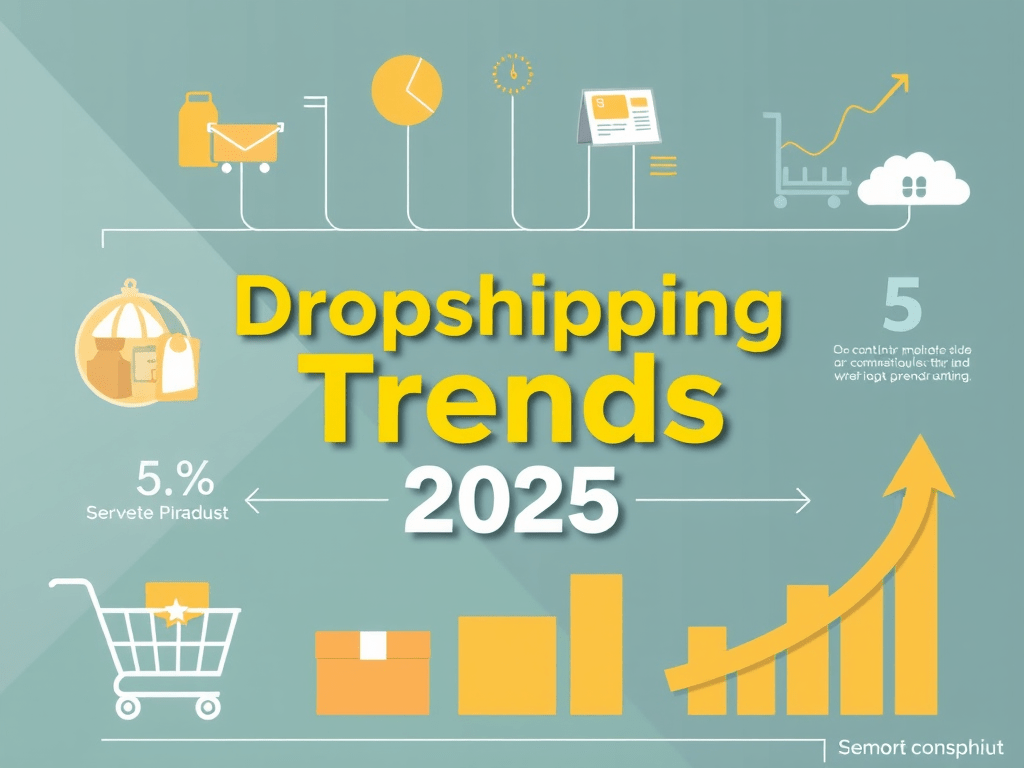
Supplier dependence is another critical issue. You rely on suppliers for product quality, inventory levels, and shipping times. If a supplier fails to deliver on time or provides low-quality products, it reflects poorly on your business, leading to dissatisfied customers and potential loss of sales. Establishing relationships with reliable suppliers and having contingency plans is vital for mitigating this risk.
Lastly, customer service challenges can arise when dealing with returns or complaints. Since you don’t handle the products directly, navigating these issues can be cumbersome. Providing excellent customer service is crucial for maintaining a positive brand reputation, which can be challenging when you don’t have direct control over the fulfillment process.
Conclusion
In conclusion, dropshipping presents a compelling opportunity for aspiring entrepreneurs, particularly due to its low financial risk and ease of entry. However, it also comes with challenges like low profit margins and high competition. By understanding these dynamics and preparing accordingly, you can determine if dropshipping is the right fit for your business aspirations. Remember, success in dropshipping requires continuous learning, strategic marketing, and a focus on customer satisfaction.
Step 1: Finding a Profitable Niche and Winning Products
What Makes a Good Niche?
Identifying a profitable niche is the cornerstone of a successful dropshipping business. A good niche is characterized by several key factors:
-
Market Demand: A niche should have a substantial and sustainable demand. Look for products that consumers are actively searching for. Tools like Google Trends can help you assess the popularity of various niches over time.
-
Low Competition: While it’s tempting to jump into popular niches, high competition can make it challenging to establish your brand. A good niche balances demand with manageable competition. Use tools like SEMrush or Ahrefs to analyze the competitive landscape.
-
Profitability: Ensure that the niche allows for a healthy profit margin. Ideally, you should aim for products that can be sold at a price point that covers costs while providing a profit. Generally, a markup of 30-50% is reasonable in the dropshipping model.
-
Passion and Knowledge: Choosing a niche that you are passionate about or knowledgeable in can make the journey more enjoyable and increase your chances of success. Your enthusiasm will resonate with customers and help you create better marketing content.
-
Trends and Longevity: Look for niches that are not just fads but have the potential for long-term growth. Seasonal trends can be lucrative but also unpredictable. Seek out niches that show consistent demand year-round.
How to Brainstorm Niche Ideas
Once you understand what makes a good niche, it’s time to brainstorm ideas. Here are some effective strategies:
-
Personal Interests and Hobbies: Start with what you love. Consider your hobbies, interests, and expertise. This can lead to niches that you are naturally inclined to market.
-
Online Communities: Explore forums, social media groups, and platforms like Reddit to see what products people are discussing. Engage in conversations to uncover pain points that need solutions.
-
Marketplaces: Browse popular online marketplaces like Amazon, eBay, and Etsy. Check out best-seller lists to identify trending products. Pay attention to customer reviews to understand what customers appreciate or dislike about existing products.
-
Social Media Trends: Platforms like TikTok, Instagram, and Pinterest can provide insights into what products are gaining popularity. Use hashtags and trend analysis tools to identify emerging trends.
-
Seasonal Events and Holidays: Look for products that are relevant to upcoming holidays or events. This can be a great way to tap into temporary spikes in demand.
-
Keyword Research: Use keyword research tools like Ubersuggest or Moz to identify search terms with high volume and low competition. This can lead to discovering niches that are underserved.
Validating Your Niche
Before fully committing to a niche, validation is crucial to ensure that it’s viable. Here are some methods to validate your niche idea:
-
Market Research: Conduct thorough research to understand the target audience. Create buyer personas to identify their demographics, preferences, and purchasing behaviors.
-
Competitor Analysis: Analyze competitors in your niche. Look at their product offerings, pricing, customer reviews, and marketing strategies. Identify gaps in their offerings that you can fill.
-
Test Products: Before launching a full store, consider testing a few products within your niche. Use platforms like eBay or Etsy to gauge interest and gather feedback.
-
Surveys and Feedback: Use tools like SurveyMonkey or Google Forms to collect feedback from potential customers. Ask them about their interests, needs, and willingness to purchase specific products.
-
Pre-launch Campaigns: Create a landing page with a sign-up form to gauge interest in your niche products. Drive traffic through social media ads or organic posts to see how many visitors convert.
Methods for Finding Winning Products
Finding winning products is a continual process that involves research and testing. Here are effective methods to discover products that are likely to succeed in your dropshipping store:
-
Supplier Marketplaces: Utilize platforms like AliExpress, Oberlo, or SaleHoo to explore trending products. Look for items with high order volumes and positive reviews.
-
Social Media Trend Tools: Tools like BuzzSumo can help you identify trending products and topics across social media platforms. Monitoring influencers in your niche can also provide insights into what products are gaining traction.
-
Customer Pain Points: Focus on products that solve specific problems for customers. Conduct surveys or read reviews to identify common issues that consumers face and look for products that address these problems.
-
Criteria for a Good Dropshipping Product:
- Price Point: Aim for products priced between $15 and $200. This range often allows for better margins while being affordable for most consumers.
- Not Easily Found in Stores: Products that are unique or not widely available in local stores often perform better. This exclusivity can create a sense of urgency and demand.
- Ease of Shipping: Lightweight and durable products are ideal as they minimize shipping costs and risks of damage.
-
Visual Appeal: Products that are visually appealing or lend themselves to striking images often perform better on platforms like Instagram and Pinterest.
-
Influencer Collaborations: Partnering with influencers can provide valuable insights into which products resonate with their audience. This can help you identify potential winning products based on their recommendations.
-
Utilize Google Trends: Monitor Google Trends for search volumes related to your niche. Look for upward trends in search queries, which can indicate growing interest in specific products.
Conclusion
Finding a profitable niche and winning products is an essential first step in your dropshipping journey. By understanding what makes a good niche, brainstorming ideas, validating your choices, and utilizing various methods for product research, you can position yourself for success. Remember, persistence and adaptability are key in this ever-evolving landscape. Keep your ears to the ground, stay informed on trends, and don’t hesitate to pivot your strategy as needed. With the right approach, you’ll be well on your way to building a thriving dropshipping business.
Step 2: Choosing the Right Dropshipping Suppliers
Finding Reliable Dropshipping Suppliers
Choosing the right dropshipping supplier is a critical step in your e-commerce journey. A reliable supplier can make or break your business by affecting your product quality, shipping times, and customer satisfaction. Here’s a guide to finding trustworthy suppliers, focusing on major platforms like AliExpress, CJ Dropshipping, and USA-Based Suppliers.
AliExpress
Overview
AliExpress is a popular platform for dropshippers due to its vast selection of products at competitive prices. Many beginners start here because of the low barrier to entry and the ability to access thousands of suppliers.
Pros
- Wide Variety: AliExpress offers millions of products across numerous categories, making it easy to find niche items.
- Low Prices: Generally, the prices are lower compared to other platforms, allowing for higher profit margins.
- No Upfront Costs: You can list products without any upfront investment, making it a great choice for beginners.
Cons
- Shipping Times: Many products ship from overseas, which can lead to long delivery times (often 2-4 weeks or more).
- Quality Control: Product quality can vary significantly between suppliers, making it essential to vet each one carefully.
- Communication Barriers: Many suppliers may not speak English fluently, which can complicate communication.
CJ Dropshipping
Overview
CJ Dropshipping is an increasingly popular alternative to AliExpress. It offers a range of services tailored specifically for dropshippers, including product sourcing and warehousing.
Pros
- Faster Shipping: CJ has warehouses in multiple locations, including the USA, which can significantly reduce shipping times.
- Product Sourcing: They can help you find products that aren’t available on their platform, streamlining your sourcing process.
- Quality Assurance: CJ performs quality checks on products, offering peace of mind regarding what you sell.
Cons
- Higher Prices: While the quality is typically better, prices can be higher than those on AliExpress, which may affect your profit margins.
- Learning Curve: The platform can be more complex than AliExpress, requiring time to learn how to navigate its features effectively.
- Limited Variety: While they have many products, the variety may not be as extensive as AliExpress.
USA-Based Suppliers
Overview
Working with USA-based suppliers can provide several advantages, particularly for entrepreneurs looking to target American customers. Suppliers like Printful and Spocket specialize in dropshipping and offer a range of products.
Pros
- Fast Shipping: Products shipped from within the USA typically arrive much faster than international shipments.
- Higher Product Quality: Many USA-based suppliers maintain strict quality control, resulting in higher-quality products.
- Easier Returns: Return processes are usually simpler when dealing with domestic suppliers, which can enhance customer satisfaction.
Cons
- Higher Costs: Products from USA suppliers often come at a premium, which could affect your pricing strategy.
- Limited Product Range: Depending on the niche, you may find fewer options compared to platforms like AliExpress.
- Inventory Management: Some suppliers may require you to manage inventory, which can complicate the dropshipping model.
What to Look for in a Good Supplier
When evaluating potential dropshipping suppliers, it’s crucial to have a checklist to ensure they meet your business needs. Here’s a handy guide:
- Communication: Ensure the supplier is responsive and easy to communicate with. Quick responses indicate a reliable partner.
- Shipping Times: Check the average shipping times to your target market. Faster shipping can lead to higher customer satisfaction.
- Product Quality: Order samples to assess the quality of products firsthand. Look for reviews and ratings from other dropshippers.
- Return Policies: Understand the supplier’s return and refund policy. Clear, fair policies can save you from potential headaches.
- Pricing: Compare prices across suppliers to ensure you maintain healthy profit margins.
- Tracking Information: Reliable suppliers should provide tracking information for shipments, allowing you and your customers to monitor orders.
- Reputation: Research the supplier’s reputation through reviews and ratings on platforms like Trustpilot or forums dedicated to dropshipping.
- Inventory Levels: Suppliers should provide real-time inventory levels to avoid selling out-of-stock items.
- Payment Methods: Ensure the supplier offers secure payment methods that align with your preferences.
Final Thoughts
Selecting the right dropshipping supplier is essential for building a successful e-commerce business. Take your time to research and vet potential suppliers thoroughly. Remember, your supplier is a partner in your business journey, and their reliability will directly impact your brand’s reputation and customer satisfaction. By following this guide and utilizing the checklist, you can confidently choose suppliers that will help propel your dropshipping venture toward success.
Step 3: Building Your Online Store
Choosing Your Shopify Plan
To kickstart your dropshipping journey, you first need to select the right Shopify plan. Shopify offers a variety of plans tailored to different business needs, starting from the Basic plan to more advanced options like Shopify and Advanced Shopify. Here’s a quick overview:
- Basic Shopify: Ideal for beginners, this plan provides all the essential features to set up your store, including an online store, unlimited products, and 24/7 support.
- Shopify: This plan includes everything in Basic, plus additional reporting features and gift cards, making it suitable for growing businesses.
- Advanced Shopify: Best for established businesses that need advanced reporting and third-party calculated shipping rates.
Start with the Basic plan if you’re just beginning. You can always upgrade as your business grows.
Picking a Theme
Once you’ve chosen your plan, it’s time to design your store. Shopify has a plethora of free and premium themes that cater to various niches. When selecting a theme, consider the following:
- Niche Relevance: Choose a theme that resonates with the products you plan to sell. For instance, if you’re focusing on beauty products, look for themes that emphasize aesthetics and visuals.
- Mobile Responsiveness: Ensure the theme is mobile-friendly, as a significant portion of online shopping occurs on mobile devices.
- Customization Options: Select a theme that allows for customization so you can tailor it to fit your brand identity.
To install a theme, navigate to the “Online Store” section of your Shopify admin, click on “Themes,” and browse the Shopify Theme Store. You can preview and publish the theme directly from there.
Setting Up Essential Pages
Your online store must have several essential pages to establish trust and provide vital information to your customers. Here are the key pages you should create:
- About Us: Share your brand story, mission, and values. This page builds a personal connection with your customers.
- Contact Us: Provide clear contact information, including email addresses, phone numbers, and social media links, so customers can reach you easily.
- Policies: Draft your policies, including:
- Privacy Policy: Explain how you collect, use, and protect customer data.
- Return Policy: Clearly outline your return and refund process to set customer expectations.
- Shipping Policy: Provide details on shipping options, costs, and delivery times.
To create these pages, go to “Online Store,” then click on “Pages” in your Shopify admin. Here, you can add new pages and customize their content.
Installing Key Apps
To streamline your dropshipping business, you’ll need to install a few essential apps. Here are some must-haves:
- Product Import Tool: Use apps like DSers or CJ Dropshipping to import products from suppliers directly to your store. These tools make it easy to manage inventory and fulfill orders seamlessly.
- SEO Optimization: Consider an app like Plug in SEO to help optimize your store for search engines, driving more organic traffic.
- Email Marketing: Apps like Klaviyo or Omnisend can help you build email campaigns to engage with your customers and promote new products.
To install apps, go to the Shopify App Store, search for the desired app, and click “Add app” to integrate it into your store.
Setting Up Payment Gateways
To accept payments from customers, you need to set up payment gateways. Shopify supports various payment options, including credit cards, PayPal, and Shopify Payments. Here’s how to set it up:
- Navigate to Settings: In your Shopify admin, click on “Settings” and then “Payments.”
- Choose Your Payment Method: Select Shopify Payments for a seamless integration, or choose from a range of third-party payment providers like PayPal, Stripe, or others.
- Complete Setup: Follow the prompts to enter your business and banking information. Ensure you comply with all requirements to avoid delays in payment processing.
Once set up, test your payment gateways to ensure they function correctly before launching your store.
WooCommerce as an Alternative
While Shopify is a robust platform ideal for beginners, you might also consider WooCommerce as an alternative. WooCommerce is a WordPress plugin that allows for extensive customization and flexibility. It’s great if you’re familiar with WordPress and want to maintain more control over your site’s design and functionality. However, it may require a bit more technical knowledge compared to Shopify.
Final Thoughts
Building your online store is an exciting step in your dropshipping journey. By following these steps—choosing a suitable Shopify plan, picking a theme, setting up essential pages, installing key apps, and configuring payment gateways—you’re well on your way to creating a successful online business. Remember, the key to success in dropshipping lies in choosing the right products, marketing effectively, and providing excellent customer service. Stay persistent, learn from your experiences, and you will see growth over time. Happy selling!
Step 4: Marketing Your Dropshipping Business to Get Sales
Social Media Marketing (TikTok & Instagram)
Social media is a powerhouse for marketing your dropshipping business, particularly platforms like TikTok and Instagram, which are visually driven and perfect for showcasing products. Here’s how to leverage them effectively:
1. Create Engaging Content
- Tip: Use high-quality images and videos of your products. Consider creating lifestyle shots that show the product in use, which can resonate more with potential customers.
- Example: If you’re selling kitchen gadgets, post a short video showing how to use a vegetable chopper to prepare a meal quickly.
2. Collaborate with Influencers
- Tip: Partner with micro-influencers who have an engaged audience in your niche. They can help promote your products authentically.
- Example: If you sell beauty products, find beauty influencers who can create tutorials using your items. Offer them free products in exchange for reviews or shoutouts.
3. Utilize Hashtags and Trends
- Tip: Research trending hashtags relevant to your niche and use them in your posts. This increases your visibility and helps potential customers discover your brand.
- Example: For a dropshipping store focused on pet supplies, use hashtags like #PetLovers, #DogMom, or #CatLife to reach pet enthusiasts.
4. Run Contests and Giveaways
- Tip: Organize contests that encourage users to share your posts, tag friends, or create content featuring your products. This can rapidly increase your reach.
- Example: A giveaway for a bundle of your best-selling items can incentivize sharing and participation, expanding your audience significantly.
5. Engage with Your Audience
- Tip: Respond promptly to comments and messages. Create polls and questions in your stories to involve your audience in your brand.
- Example: Use Instagram Stories to ask followers what products they want to see next or their favorite way to use a product you offer.
Paid Advertising (Facebook/Instagram Ads)
Paid advertising can give your dropshipping business the boost it needs to reach a larger audience quickly. Here’s how to get started effectively:
1. Define Your Target Audience
- Tip: Use Facebook’s audience insights to identify your ideal customer. Tailor your ads to target demographics that align with your product offerings.
- Example: If you’re selling eco-friendly products, target users interested in sustainability, organic products, and eco-conscious brands.
2. Use Eye-Catching Visuals
- Tip: Invest time in creating attention-grabbing visuals and videos for your ads. Bright colors, clear imagery, and concise messages can significantly impact engagement.
- Example: A video ad showcasing the features of a unique kitchen gadget can demonstrate its value and encourage viewers to click through to your store.
3. Implement Retargeting Campaigns
- Tip: Use retargeting ads to reach users who visited your site but didn’t make a purchase. This keeps your brand top-of-mind and can lead to conversions.
- Example: If someone viewed a specific product but didn’t buy it, serve them an ad highlighting that product with a limited-time discount.
4. Test Different Ad Formats
- Tip: Experiment with various ad formats, including carousel ads, video ads, and stories. Each format can yield different engagement levels.
- Example: Use carousel ads to showcase multiple products or variations, allowing potential customers to see a range of offerings in one go.
5. Monitor and Optimize Your Ads
- Tip: Regularly check the performance of your ads. Use A/B testing to compare different creatives or audience settings and optimize based on what works best.
- Example: If a certain image or message performs better than others, shift more budget to that successful ad to maximize your ROI.
Search Engine Optimization (SEO)
SEO is vital for driving organic traffic to your dropshipping store. Here’s how to implement effective SEO strategies:
1. Keyword Research
- Tip: Use tools like Google Keyword Planner or Ubersuggest to find relevant keywords for your niche. Focus on long-tail keywords that your target audience is likely to search for.
- Example: Instead of just targeting “kitchen gadgets,” aim for “best kitchen gadgets for small apartments” for more specific traffic.
2. Optimize Product Descriptions
- Tip: Write unique and detailed product descriptions that include your target keywords. Avoid duplicate content, as it can hurt your rankings.
- Example: Instead of a generic description, include benefits, features, and potential uses for each product, weaving in keywords naturally.
3. Create Valuable Content
- Tip: Start a blog on your website where you can provide useful information related to your products. This can improve your SEO and position you as an authority in your niche.
- Example: If you sell beauty products, write articles about skincare routines or tips for choosing the right makeup, linking to your products within the content.
4. Improve Website Speed and Mobile Optimization
- Tip: Ensure your website loads quickly and is mobile-friendly, as these factors significantly impact your SEO ranking and user experience.
- Example: Use tools like Google PageSpeed Insights to analyze your site’s speed and make necessary adjustments, such as optimizing images.
5. Build Backlinks
- Tip: Reach out to bloggers or websites in your niche and ask for backlinks to your store. Quality backlinks can boost your site’s authority and search rankings.
- Example: Offer to write guest posts for popular blogs in your niche, including links to your products where relevant.
Email Marketing
Email marketing is a powerful tool for nurturing relationships with your customers and driving repeat sales. Here’s how to effectively use it:
1. Build Your Email List
- Tip: Use lead magnets like discounts, freebies, or exclusive content to encourage visitors to sign up for your newsletter.
- Example: Offer a 10% discount on their first order in exchange for signing up, which not only builds your list but can also encourage immediate purchases.
2. Segment Your Audience
- Tip: Divide your email list into segments based on purchase behavior, interests, or demographics. This allows you to send targeted messages that resonate better with each group.
- Example: Send personalized recommendations to customers based on their past purchases, such as suggesting related products or accessories.
3. Create Compelling Campaigns
- Tip: Design visually appealing emails that highlight your products, promotions, or valuable content. Keep your message concise and focused.
- Example: Send out a monthly newsletter featuring best-sellers, new arrivals, and exclusive discounts, encouraging clicks through engaging visuals and clear calls to action.
4. Automate Your Emails
- Tip: Use email automation tools to set up welcome emails, abandoned cart reminders, and follow-up messages. This can save time and improve engagement.
- Example: If a customer leaves items in their cart, send them a reminder email with a special discount to encourage them to complete their purchase.
5. Monitor Performance Metrics
- Tip: Track open rates, click-through rates, and conversion rates to gauge the effectiveness of your campaigns. Use this data to refine your strategies.
- Example: If you notice a high open rate but low click-through rate, consider tweaking your email content or call-to-action to better engage your audience.
Conclusion
Marketing your dropshipping business effectively requires a combination of strategies tailored to your target audience. By leveraging social media, paid advertising, SEO, and email marketing, you can create a comprehensive approach that not only attracts visitors but also converts them into loyal customers. Start implementing these actionable tips today, and watch your business grow!
Common Mistakes to Avoid as a Beginner
1. Choosing a Bad Niche
One of the most significant mistakes beginners make is selecting a niche that lacks demand or is overly saturated. A poorly chosen niche can lead to low sales and wasted marketing efforts.
Solution: Conduct thorough market research using tools like Google Trends, social media insights, and keyword research to identify trending products and niches. Focus on areas where you have personal interest or experience, as this can provide you with unique insights and a competitive edge.
2. Not Testing Products
Many newcomers jump into selling products without testing their quality or demand. This can result in high return rates, negative reviews, and ultimately, a tarnished brand reputation.
Solution: Before fully committing to a product, order samples from suppliers to evaluate quality. Additionally, use platforms like social media or email lists to conduct pre-launch surveys to gauge interest and gather feedback on potential products.
3. Poor Customer Service
Neglecting customer service can severely impact your business. Customers expect timely responses and resolution of issues; failing to meet these expectations can lead to negative reviews and lost sales.
Solution: Develop a robust customer service strategy. Set clear response times for inquiries, utilize chatbots for immediate assistance, and maintain an FAQ section on your site. Always prioritize customer satisfaction to build a loyal customer base.
4. Ignoring Shipping Times
Long or unclear shipping times can frustrate customers and lead to cart abandonment or complaints. Many beginners underestimate the importance of transparent shipping practices.
Solution: Communicate shipping times clearly on your product pages. Partner with suppliers who offer reliable shipping options and consider using fulfillment services to reduce delivery times. Always provide tracking information so customers can monitor their orders.
5. Unrealistic Profit Expectations
Many new dropshippers enter the market expecting to make significant profits quickly. This can lead to disappointment and poor decision-making when initial sales don’t meet expectations.
Solution: Set realistic financial goals and understand that dropshipping requires time to build momentum. Create a detailed business plan that includes projected expenses, margins, and a timeline for reaching profitability. Regularly review and adjust your goals as you gain more experience.
6. Overlooking Marketing Strategies
Beginners often underestimate the importance of marketing, believing that simply listing products online is enough. Without effective marketing, even the best products can go unnoticed.
Solution: Invest time in learning about digital marketing strategies such as SEO, social media marketing, and email campaigns. Start by creating a content calendar for consistent engagement and utilize paid advertising to reach a larger audience.
7. Not Building a Brand
Many dropshippers focus solely on selling products without establishing a brand identity. This can make it difficult to differentiate from competitors and build customer loyalty.
Solution: Develop a clear brand vision that includes your target audience, values, and unique selling propositions. Create consistent branding across your website, social media, and packaging to foster recognition and trust among consumers.
8. Skipping Analytics and Data Tracking
Failing to analyze performance metrics can lead to missed opportunities for optimization. Beginners often overlook the importance of data in driving business decisions.
Solution: Utilize tools like Google Analytics and social media insights to track customer behavior, sales trends, and marketing effectiveness. Regularly review this data to make informed decisions about product offerings, marketing strategies, and overall business improvements.
9. Relying on a Single Supplier
Many new dropshippers rely solely on one supplier for their products. This can create significant risks, such as stock shortages or quality issues.
Solution: Establish relationships with multiple suppliers to diversify your product sources. This not only helps mitigate risks but also provides opportunities for better pricing and product variety. Always have backup suppliers in case of emergencies.
10. Neglecting Legal and Tax Obligations
Beginners often overlook the legal and tax implications of running a dropshipping business. This can lead to fines or even legal issues down the line.
Solution: Research the legal requirements for running an online business in your location, including sales tax obligations and business licenses. Consider consulting with a legal expert or accountant to ensure compliance and to set up the proper structure for your business.
By avoiding these common mistakes, you can set yourself on a path to success in the dropshipping business. Remember, every setback is an opportunity to learn and grow, so stay resilient and keep pushing forward!
Frequently Asked Questions (FAQs) about top dropshipping products 2025
1. What are the best dropshipping products to sell in 2025?
The top dropshipping products for 2025 span various categories, including apparel, beauty products, kitchen gadgets, baby care items, pet supplies, home décor, office products, and tools. For instance, popular items like vintage t-shirts, hydrocolloid pimple patches, stainless steel tumblers, and organic baby clothing are trending. Researching current market demands and consumer interests can help you choose the right products for your store.
2. How much money do I need to start a dropshipping business?
Starting a dropshipping business can be relatively low-cost compared to traditional retail models. You may need anywhere from $200 to $1,000 to get started. This budget typically includes setting up your online store, marketing expenses, and initial product samples. However, it’s wise to have extra funds for unexpected costs and ongoing marketing efforts as you grow.
3. Do I need to register a company to start dropshipping?
While it’s not legally required to register a business to start dropshipping, doing so is highly recommended. Registering your business provides legal protection, establishes credibility, and can help with taxes. Check your local regulations to understand the requirements for registering a business in your area.
4. How do I handle returns and customer service?
Handling returns and customer service is crucial for maintaining a good relationship with your customers. Establish a clear return policy that outlines the process for returns and exchanges. Work closely with your suppliers to ensure they have a return process in place. Use email, chat, or phone support to address customer inquiries promptly and professionally, which can help build trust and encourage repeat purchases.
5. What are the most profitable dropshipping niches for 2025?
In 2025, some of the most profitable niches include beauty and personal care, especially natural and vegan products, baby products, and pet supplies. Additionally, the home décor and kitchen categories are expected to grow significantly as more consumers invest in their living spaces. Focusing on niche markets with passionate customer bases can lead to higher profit margins.
6. How do I find reliable dropshipping suppliers?
To find reliable dropshipping suppliers, start by researching established platforms like AliExpress, Oberlo, or SaleHoo. Look for suppliers with positive reviews, good communication, and a history of timely shipping. You can also reach out to manufacturers directly or attend trade shows to connect with suppliers who align with your product offerings.
7. Can I run a dropshipping business from anywhere?
Yes, one of the main advantages of dropshipping is the ability to run your business from anywhere with an internet connection. This flexibility allows you to manage your store, communicate with suppliers, and serve customers from any location. However, ensure you have reliable internet access and a system in place to manage your orders and customer inquiries efficiently.
8. What marketing strategies should I use for my dropshipping store?
Effective marketing strategies for your dropshipping store include leveraging social media platforms, influencer collaborations, and content marketing. Utilize targeted advertising on platforms like Facebook and Instagram to reach your audience. Creating engaging content, such as blog posts or videos, can also help drive traffic to your store and establish your brand as an authority in your niche.
9. How do I price my dropshipping products competitively?
To price your dropshipping products competitively, consider factors like the cost of goods sold, shipping fees, and your desired profit margin. Research your competitors to understand their pricing strategies and find a balance that attracts customers while ensuring profitability. Offering discounts for bulk purchases or creating bundle deals can also help you stand out.
10. What tools do I need to manage my dropshipping business?
To effectively manage your dropshipping business, consider using tools for website building (like Shopify or WooCommerce), email marketing (such as Mailchimp), social media scheduling (like Buffer), and analytics (like Google Analytics). Inventory management tools can help keep track of stock levels, while customer service platforms can streamline communication. Investing in the right tools can save you time and enhance your business operations.
Conclusion: Your Next Steps to Launching Your Business
Take Action: Your Path to Success in Dropshipping
Starting your dropshipping business in 2025 is an exciting journey, but it’s important to approach it with a strategic mindset. Here are the key steps to get you moving forward:
-
Identify Your Niche: Focus on product categories that are trending and resonate with your interests. Whether it’s beauty products, home décor, or pet supplies, choose a niche that excites you and has a solid customer base. Research the top dropshipping products and analyze their market demand.
-
Select a Reliable Supplier: Partner with trustworthy suppliers who offer quality products and efficient shipping. Platforms like Shopify and Oberlo can help you connect with reputable dropshipping suppliers.
-
Build Your Online Store: Create an engaging and user-friendly website. Utilize platforms such as Shopify to set up your online store. Ensure that your website is optimized for mobile devices, as many consumers shop on their phones.
-
Market Your Products: Leverage social media, influencer partnerships, and content marketing to reach your target audience. Create engaging content that showcases your products and highlights their benefits.
-
Test and Optimize: Monitor your sales and customer feedback closely. Use this data to refine your product offerings, marketing strategies, and customer service.
Remember, dropshipping is not a get-rich-quick scheme. It requires dedication, continuous learning, and a willingness to adapt to market trends. Stay committed to understanding your audience and improving your business practices.
Your Next Step Awaits
Now is the time to take action. Start small, stay focused, and embrace the learning process. Every successful entrepreneur began with a single step—make yours today! Whether it’s choosing your niche or setting up your store, take that leap of faith and begin your dropshipping journey. Your future self will thank you!
Important Disclaimer
⚠️ Important Disclaimer
The information provided in this guide is for educational purposes only. Starting a business involves risks, and success is not guaranteed. Please conduct your own thorough research and consider consulting with financial and legal professionals before making any business decisions.
